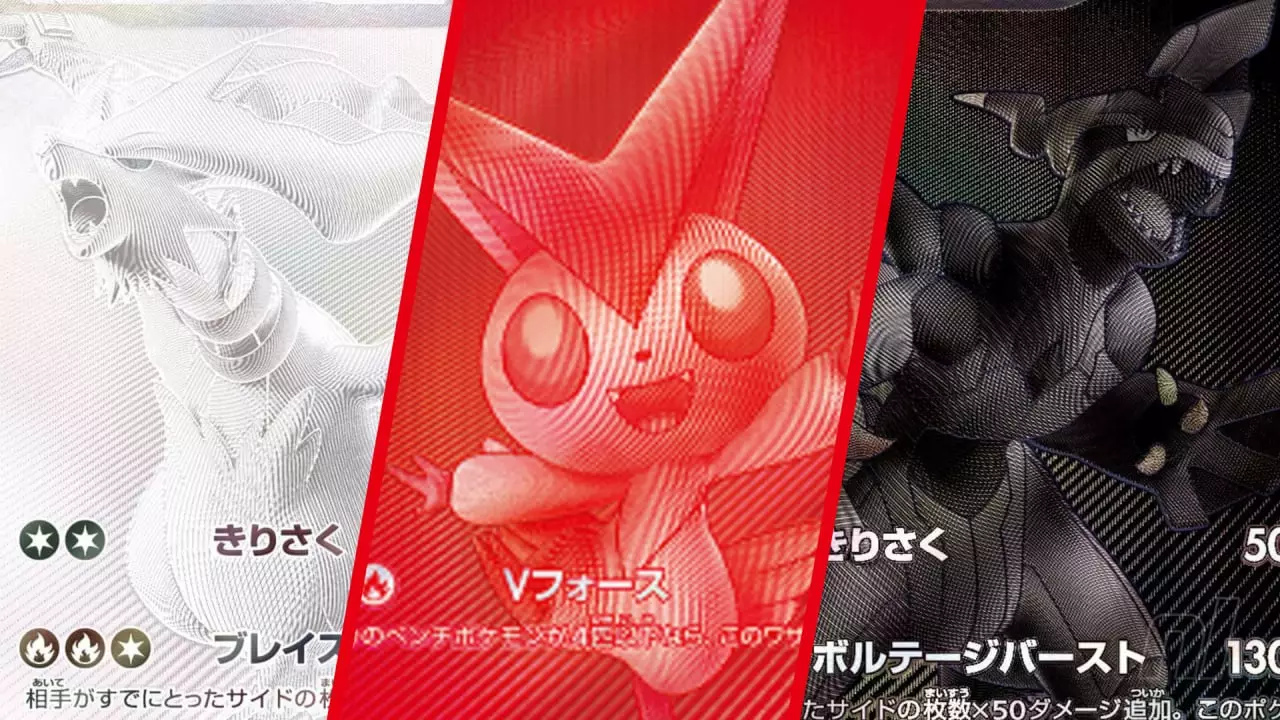The Pokémon Company is gearing up to celebrate the 15th anniversary of the beloved Black and White video games with a special Trading Card Game (TCG) set that promises to be a feast for both the eyes and wallets of fans worldwide. Dubbed the ‘Black Bolt’ and ‘White Flare’ sets, this release looks to do more than just tug at heartstrings; it aims to introduce a novel level of card rarity that is sure to provoke strong reactions in the collector community. Beyond mere nostalgia, the unique offerings in this set may shape the future of Pokémon TCG and its market dynamics in compelling ways.
The Allure of New Rarities
Let’s delve into the new rarity system, coined ‘BWR’ (Black White Rare), which introduces an elevated tier of collectibility to the game. Featured prominently in this set are iconic Pokémon such as Reshiram, Zekrom, and Victini, rendered in striking single-color designs that capture their essence in a minimalist yet powerful manner. The aesthetic shift is not just a design choice; it is a strategic move to attract both seasoned collectors and newcomers alike. While the increased rarity lends these cards a certain allure, one can’t help but ponder how this could incite yet another wave of scalping—something that plagues the TCG community.
Challenges Ahead: The Scalping Dilemma
History has taught us that excitement often leads to chaos. Just look at the recent expansions like Destined Rivals and Prismatic Evolutions, which faced significant challenges during their launches, leaving fans frustrated and disillusioned. The anticipation surrounding the Summer release of the Black Bolt and White Flare sets raises flags, especially with the promise of a new desirable rarity. Scalpers have historically targeted scarcity to elevate prices on resale channels, leaving genuine fans to grapple with inflated costs. It’s a frustrating cycle, and the Pokémon Company must implement smarter distribution strategies to ensure that dedicated fans are not left in the lurch.
Community Reaction and Anticipation
Despite the looming threat of market manipulation, the buzz within the Pokémon community is palpable. Fans are actively discussing their plans for the launch; many are keen to snag some packs right off the bat to add these beautiful cards to their collections. The question arises: will the excitement and love for Pokémon overshadow the inevitable scalping that often accompanies highly coveted releases? Will collectors choose to pay a premium to celebrate their nostalgia, or will they hold out for fairer market dynamics?
The Future of Pokémon TCG
As we await a more extensive Western release—one that may involve tantalizing name changes and adaptations—enthusiasm remains high. This signifies not just a comparison to past sets but a potential evolution of how Pokémon TCG is received in a modern market. Edge-of-the-seat anticipation surrounds what the new rarity could mean for future evolutions in card design and collector sociology. Ultimately, whether you’re in it for nostalgia, artwork, or competitive gameplay, this new expansion invites all to reflect on Pokémon’s enduring legacy while navigating a new landscape of rarity and value.

